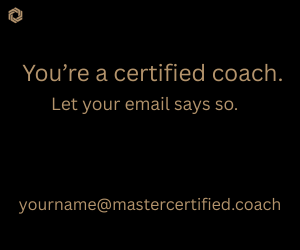In a world where remote or hybrid workforces, evolving employee needs, and bottom-line pressures intersect, measuring coaching’s impact has never been more crucial.
The following Coaching for Performance ROI evaluation framework, as detailed in the sixth edition of “Coaching for Performance” by Sir John Whitmore and Tiffany Gaskell, provides a practical method for assessing coaching outcomes.
As professional coaches, demonstrating both the tangible and intangible value of our interventions is crucial for both client satisfaction and business growth. Performance Consultants’ proven evaluation framework offers a structured approach to measuring coaching effectiveness across multiple dimensions, using it with clients and partners in organizations across the life sciences, pharma, manufacturing, and institutional sectors.
Here’s how to implement a simplified version of our Coaching for Performance ROI evaluation system in your practice.
Step 1. Goal Alignment – Set the Foundation
At the start of the coaching engagement, explore and agree on your client’s goals for the coaching and identify measures for each goal. You may need to involve your client’s line manager at this stage.
Make sure to establish clear alignment across three critical areas:
- Short-term objectives (six-month horizon).
- Long-term aspirations.
- Organizational fit, including:
-
- Role requirements.
- Values and leadership competencies.
- Strategic priorities.
This triple alignment ensures coaching objectives serve both individual growth and organizational success.
Step 2. Record Keeping – Track Behavioral Evolution and Feedback
The heart of coaching impact lies in behavioral transformation. As the coaching progresses, you and your client should both keep a note of actions taken and progress made, including any feedback from their line manager, team members, or peers. Make sure you document the following:
- Specific behavioral changes.
- Business impacts for each behavior shift.
Stakeholder perception – create feedback loops to gather insights on:
Step 3. Coaching Review – Calculate the ROI
In the coaching review session, fill in the Performance Coaching Evaluation Report in the free Coach Toolkit available on Performance Consultants’ website. Or create your own report to evaluate qualitative and quantitative impacts for each goal or area of focus in the following way:
Assess Skill Level
- Establish the baseline measurement (1–10 scale).
- Record current proficiency level.
- Document specific behavioral changes.
- Note business impacts for each behavior shift.
Quantify Financial Impact
Transform intangible improvements into concrete financial metrics:
- Identify specific work areas impacted by coaching.
- Calculate financial gains/savings for each area.
- Assign confidence levels (percentage) to attribute results to coaching.
- Compute ROI: (Financial Impact × Confidence Level) ÷ Coaching Cost.
Measure Success: The 5-Point Impact Scale
Rate these critical factors on a 1–10 scale:
- Coaching experience value.
- Coach effectiveness.
- Behavioral change visibility.
- Goal achievement.
- Business performance impact.
This creates a balanced scorecard of coaching effectiveness that speaks to both individual and organizational stakeholders.
Business Impact Matrix
Define and rate tangible outcomes on a low/medium/high scale. You can use the following list or adapt to your specific case:
- Productivity enhancement.
- Innovation acceleration.
- Organizational capability building.
- Customer service improvement.
- Complaint reduction.
- Employee retention.
- Cost optimization.
- Revenue growth.
- Bottom-line impact.
Move on to intangible benefits; define them and rate on a low/medium/high scale using this list as inspiration:
- Manager relationships.
- Direct report engagement.
- Stakeholder collaboration.
- Peer networking.
- Client relationships.
- Team cohesion.
- Job satisfaction.
- Conflict reduction.
- Organizational commitment.
And let’s not forget the connection with the wider team and organizational context, integrating the coaching engagement evaluation with management processes.
For instance, you can engage line managers in the evaluation process to:
- Validate behavioral changes.
- Confirm business impact.
- Identify future development areas.
- Align coaching outcomes with organizational goals.
Best Practices for Implementation
Regular Documentation
- Record observations in real-time.
- Track both qualitative and quantitative metrics.
- Document unexpected positive outcomes.
Stakeholder Engagement
- Gather multi-level feedback.
- Include peer and team perspectives.
- Consider client/customer impact.
Data Analysis
- Compare pre- and post-coaching metrics.
- Calculate confidence levels carefully.
- Document calculation methodologies.
Future Planning
- Use insights to refine coaching approaches.
- Identify patterns of success.
- Adjust frameworks based on results.
Looking Ahead
This evaluation framework provides a robust foundation for demonstrating coaching value. However, remember that it’s not just about numbers – it’s about capturing the full spectrum of transformation that coaching enables. For maximum effectiveness, customize this framework to your specific coaching context while maintaining its core elements of goal alignment, behavioral change tracking, and impact measurement.
By implementing this comprehensive evaluation approach, coaches can:
- Demonstrate clear ROI to stakeholders.
- Enhance coaching program effectiveness.
- Build stronger business cases for coaching initiatives.
- Contribute to the broader recognition of coaching’s organizational value.
Remember, effective evaluation isn’t just about proving value – it’s about improving value. Use these insights to continuously refine your coaching practice and deliver ever-greater impact for your clients.
Disclaimer
The views and opinions expressed in guest posts featured on this blog are those of the author and do not necessarily reflect the opinions and views of the International Coach Federation (ICF). The publication of a guest post on the ICF Blog does not equate to an ICF endorsement or guarantee of the products or services provided by the author.
Additionally, for the purpose of full disclosure and as a disclaimer of liability, this content was possibly generated using the assistance of an AI program. Its contents, either in whole or in part, have been reviewed and revised by a human. Nevertheless, the reader/user is responsible for verifying the information presented and should not rely upon this article or post as providing any specific professional advice or counsel. Its contents are provided “as is,” and ICF makes no representations or warranties as to its accuracy or completeness and to the fullest extent permitted by applicable law specifically disclaims any and all liability for any damages or injuries resulting from use of or reliance thereupon.
Authors
Post Type
Blog
Audience Type
Coach Educators, Experienced Coaches, External Coaches, ICF Chapter Leaders, Internal Coaches, New Coaches, Professional Coaches, Team and Group Coaches
Topic
Coaching Toolbox, Discover - Your Coaching Career
Related Posts
Your Guide to Preparing for the ACC Exam
Much like a smartphone upgrade that introduces improvements for a smoother user…
How Coaching Is Driving Inclusion Around the Globe: Lessons from Local ICF Chapters
When a group of mothers in Kazakhstan, many of whom had never…
Belonging Beyond Numbers: How ICF Demographic Trends Are Shaping the Future of Coaching
What does it really mean to belong? For the International Coaching Federation…








